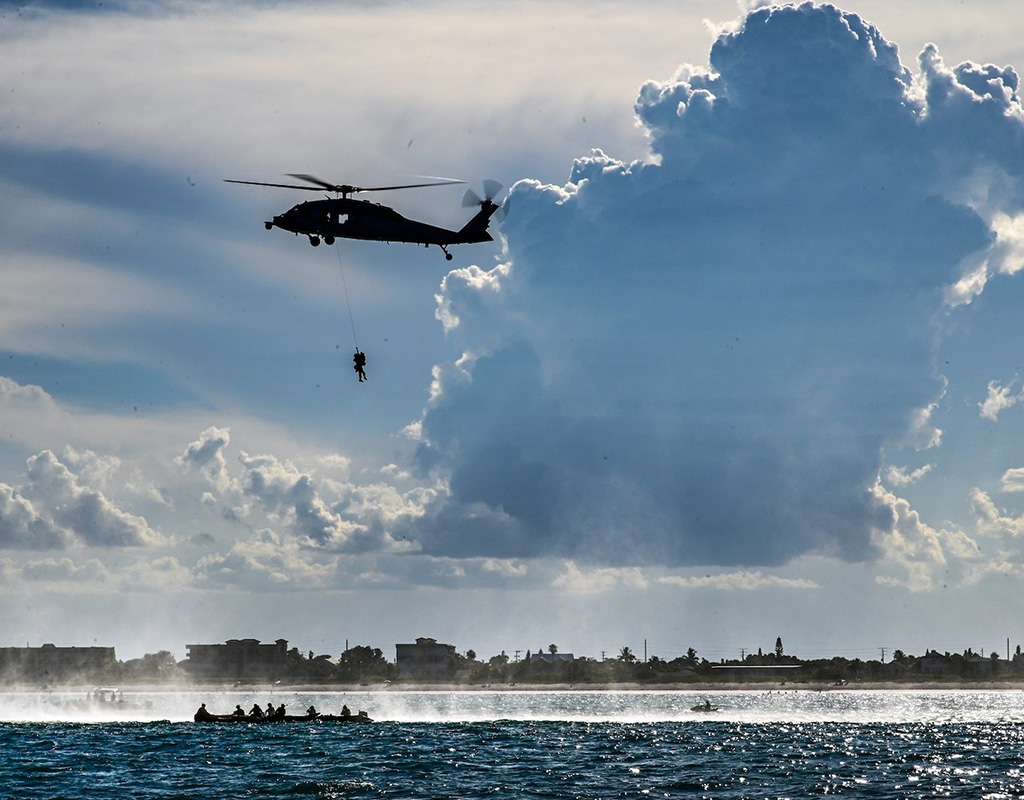
U.S. Space Command held an exercise Aug. 1-5 at Patrick Space Force Base, Fl., in preparation for the upcoming launch of NASA’s SpaceX Crew-5, targeted for no earlier than Sept. 29, 2022.
As the Department of Defense’s Human Space Flight Support Manager, USSPACECOM coordinates global DoD support for the rescue and recovery of human exploration events for NASA’s Artemis and Commercial Crew Program missions.
“This exercise led to increased confidence, trust, and understanding across organizations resulting in improvements to tactics,” said U.S. Army Brig. Gen. Richard Zellmann, deputy director of USSPACECOM’s operations directorate. “Our team is prepared to support NASA’s manned spaceflight missions as the U.S. enters a new-era of space exploration.”
First Air Force, Detachment 3 (Det. 3), the USSPACECOM-appointed lead of Human Space Flight Support, oversaw the integration of a Navy helicopter squadron, Helicopter Sea Combat Squadron (HSC) 28, and an Air Force pararescue squadron, the 48th Rescue Squadron, during the exercise. Participants trained in real-world settings meant to simulate the recovery of astronauts in emergency situations during launch or recovery.
“This validation exercise is very unique in the fact that we have been using predominately Air Force assets for 60 years,” said Air Force Lt. Col. Nick “Rambo” Pettit, Det. 3’s director of operations. “The integration of the Navy requires us to work-out any potential issues before an actual launch or recovery.”
A SpaceX Falcon 9 rocket will launch Dragon and the Crew-5 astronauts to the International Space Station from Launch Complex 39A at NASA’s Kennedy Space Center in Florida. In the unlikely event of an emergency – either before or during launch – Dragon is designed to safely separate from the Falcon 9 booster and land in the ocean.
Navy Cmdr. Chris Lewis, executive officer of HSC-28, talked about why the validation exercise was crucial the Sailors and Airmen that will support the launch.
“First and foremost, we have to get on the same page from a terminology standpoint,” he said, noting that Sailors and Airmen have different names for different components during rescue operations. “We’ve been able to be critical, and come away with valuable lessons learned from a joint perspective, and that’s ultimately going to help us save lives in the unfortunate scenario we are needed.”
Det. 3’s Lt. Col. Pettit also spoke about how Air Force “Guardian Angel” pararescue forces have specialized training specific to astronaut recovery. One of those “Guardian Angels,” Tech. Sgt. Mike Bair from the 48th Rescue Squadron, spoke about his unit’s unique capabilities.
“The astronauts are prone to high-altitude related medical issues that we know how to deal with,” he said. “We also have equipment that will test to see if there are hazardous substances unique to space travel that we need to worry about while making a recovery.”
The DoD has been partnered with NASA for over 50 years. USSPACECOM is proud to routinely partner with NASA on activities that advance our respective military and civil space missions and support the nation’s space endeavors.
This press release was prepared and distributed by the U.S. Space Command.

